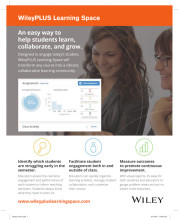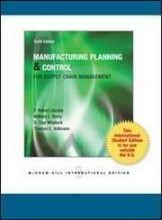Summary: Supply Chain Quality Management Lectures + Articles
- This + 400k other summaries
- A unique study and practice tool
- Never study anything twice again
- Get the grades you hope for
- 100% sure, 100% understanding
Read the summary and the most important questions on Supply Chain Quality Management lectures + articles
-
1 General introduction to quality & DMAIC
This is a preview. There are 1 more flashcards available for chapter 1
Show more cards here -
Give the definition of Supply Chain Quality Management (SCQM).
•SCQM is the “formal coordination and integration of business processes involving all partner organizations in the supply channel to measure, analyze and continually improve products, services, and processes in order to create value and achieve satisfaction of intermediate and final customers in the market place”.
•Integrate both service and production processes across the supply network and beyond the boundaries of individual firms to retain quality!
•Lean/Six Sigma is one way of retaining quality! -
1.1 History of quality
This is a preview. There are 5 more flashcards available for chapter 1.1
Show more cards here -
The third quality management guru Kaoru Ishikawa (1915 - 1989) focussed the quality improvement on the customer view (Ishikawa/ fishbone diagram). Explain this model.
- Quality first
- Consumer orientation
- Causes in (process, materials, people, environment, equipment and management) do have together (interrelated) an effect (problem) -
The sixth quality management guru Taiichi Ohno (1912 - 1990) is the founder of the Toyota Production System (TPS) and later on the founder of LEAN Manufacturing. He came up with TIMWOOD, JIT and KANBAN. Describe these tools and definitions.
7 wastes/mudas (TIMWOOD):
•Transport
•Inventory
•Motion
•Waiting
•Over-processing
•Overproduction
•Defects
•Just-in-time (JIT) manufacturing
•Kanban -->Signalling method -
1.2 Lean/ Six Sigma
-
Describe the difference between LEAN and Six Sigma.
LEAN:
History: mass production -->standardize production methods --> Henry Ford --> assembling line
Goal: Lean is focussed on zero waste.
Focus on eliminate waste, cut costs and cut lead time and rapid changeovers.
Six Sigma:
History: quality techniques and tools: deming, juran and others.
Goal: Six sigma is focussed on zero defects by reducing deviation!
Numerical measurement of quality. 99.99966% must be done without defects. -
1.3 DMAIC Method
This is a preview. There are 2 more flashcards available for chapter 1.3
Show more cards here -
Six Sigma follows a methodology structure called "DMAIC". Describe this methodology.
1. Define: What is broken?
2. Measure: how broken is it?
3. Analyse: Why is it broken?
4. Improve: Fix it!
5. Control: Keep it fixed! -
1.5.1 Introduction
-
Describe the characteristics of methodology "Six Sigma"
Characteristics of Six - Sigma as a method:
- Project selection is customer-focused (customer driven approach)
- Method prescribes that problems and issues are parameterized
- Applied for companywide quality improvement;
- Emphasis on decision - making in quantitative data and priority on bottom line results;
- Relationships among variables are modelled
- Improvement is performed in project-to-project fashion
- Ideas tested to empirical reality
- Does not offer standard cures
- Tools and techniques are advanced
- Improvement projects are led by black/ greenbelts from middle management by methodology Breakthrough Cookbook or DMAIC -
1.5.2 Research Methodology
-
Which four classes of elements consists SixSigma's Breakthrough Cookbook?
1. Business Context
- Elements are hidden factory model, cost of poor quality models;
- Philosophy provides motivation for implementation and type of objectives that can be pursued;
2. Stepwise strategy
- Stepwise procedure for tackling projects
3. Tools and techniques
- Wide range of procedures to assist the project leader in attaining intermediate results
4. Concepts and classifications
- To communicate, elements above concepts are offered -
1.5.3 Reconstruction of the business context
This is a preview. There are 1 more flashcards available for chapter 1.5.3
Show more cards here -
The business context of Six-Sigma refers to the method's purpose. Usefulness of Six-Sigma is argued from three perspectives, which three?
1. Showcases, usefulness implied from evidence of succesful applications (Motorola, AlliedSignal, General Electric);
2. Hidden factory and cost of poor quality (COPQ) models, usefulness implied from Six-Sigma's power to improve a company's cost structure by improving quality;
3. Strategic benefits, improved quality and customer satisfaction, market share increase and reduced price sensitivity. -
What are strategic benefits associated with quality and customer satisfaction?
Improved quality results in more value and satisfaction for customers. This advantage could be real cash, according to Six-Sigma by increased market share or higher profit margins. -
1.5.8 The concept of CTQ and influence factor
-
Define quality characteristics (CTQ's)
CTQs (Critical for Quality) are dimensions of product and process quality, in particular those dimensions on which a six- sigma project aims to achieve improvement. Influence factors are factors that causally affect the CTQ. The trivial many factors are dominated by the vital few.
- Higher grades + faster learning
- Never study anything twice
- 100% sure, 100% understanding































